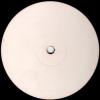Imitating a falling snowflake/tree leaf
Hi,
a quick search on the Net led me to the Snowflake curve and the Koch fractal that deal with the characteristics of the snowflake''s shape. I, au contraire, need to simulate the physics related to the falling of a tree leaf in wind (I figured a tree leaf and a snowflake have enough in common to be compared this way). The simulation should be fast (computation-wise: precalculated?) and in 3 dimensions based on the strength and orientation of the wind. Can anyone provide me with a link to some resource or perhaps explain the basics behind the maths related to this?
Thanks,
Crispy
"Literally, it means that Bob is everything you can think of, but not dead; i.e., Bob is a purple-spotted, yellow-striped bumblebee/dragon/pterodactyl hybrid with a voracious addiction to Twix candy bars, but not dead."- kSquared
February 02, 2003 02:58 PM
It''s really an aerodynamics problem. But for a snowflake, you probably could get away with setting its velocity to the wind velocity. For a big flat leaf, you could compute its orientation with respect to the wind direction, and approximate the influence of the wind accordingly.
The leaf is slightly different to the snowflake, which would be a good approximation of a planar object. The leaf of the other hand is probably slightly curved, so that it might be better approximated by a paraboloid; perhaps something of the form z = f(x2+y2).
As to the way in which it floats down, rocking slightly from side to side, that is an issue of the activity of the centre of buoyancy relative to the centre of mass. You might like to do a little research into the stability of floating objects... you should find plenty online via google and your local college library would have a fair bit as well. Check out engineering texts particularly.
Cheers,
Timkin
As to the way in which it floats down, rocking slightly from side to side, that is an issue of the activity of the centre of buoyancy relative to the centre of mass. You might like to do a little research into the stability of floating objects... you should find plenty online via google and your local college library would have a fair bit as well. Check out engineering texts particularly.
Cheers,
Timkin
Thanks for the replies!
Timkin: I''m not going to be using anything more complex than 1-poly tree leaves that are supposed to aid me in the creating of a fall theme (think: yelloish-red (yup - they call it orange ) maple leaves slowly surfing on the wind, gliding as they make weird twists and turns in the air before hitting the ground). I''ll look into "floating objects" - didn''t think of this term myself. As for my college library: erm... it''s 10x20 feet - make your own conclusions... Might try a real library, though
) maple leaves slowly surfing on the wind, gliding as they make weird twists and turns in the air before hitting the ground). I''ll look into "floating objects" - didn''t think of this term myself. As for my college library: erm... it''s 10x20 feet - make your own conclusions... Might try a real library, though 
Crispy
Timkin: I''m not going to be using anything more complex than 1-poly tree leaves that are supposed to aid me in the creating of a fall theme (think: yelloish-red (yup - they call it orange
Crispy
"Literally, it means that Bob is everything you can think of, but not dead; i.e., Bob is a purple-spotted, yellow-striped bumblebee/dragon/pterodactyl hybrid with a voracious addiction to Twix candy bars, but not dead."- kSquared
MathEngine or Havok (one of them) had a very cool demo available at one time that did a fairly realistic simulation of falling leaves, or paper. Something like that. It supported the whole rocking motion and looked quite realistic.
In most real games, I imagine actually simulating this sort of thing would be overkill. Why not use a particle system that interpolates a set of artist-generated keyframes? The particles could be randomized somewhat to create a nice variation.
Graham Rhodes
Senior Scientist
Applied Research Associates, Inc.
In most real games, I imagine actually simulating this sort of thing would be overkill. Why not use a particle system that interpolates a set of artist-generated keyframes? The particles could be randomized somewhat to create a nice variation.
Graham Rhodes
Senior Scientist
Applied Research Associates, Inc.
Graham Rhodes Moderator, Math & Physics forum @ gamedev.net
This topic is closed to new replies.
Advertisement
Popular Topics
Advertisement
Recommended Tutorials
Advertisement







